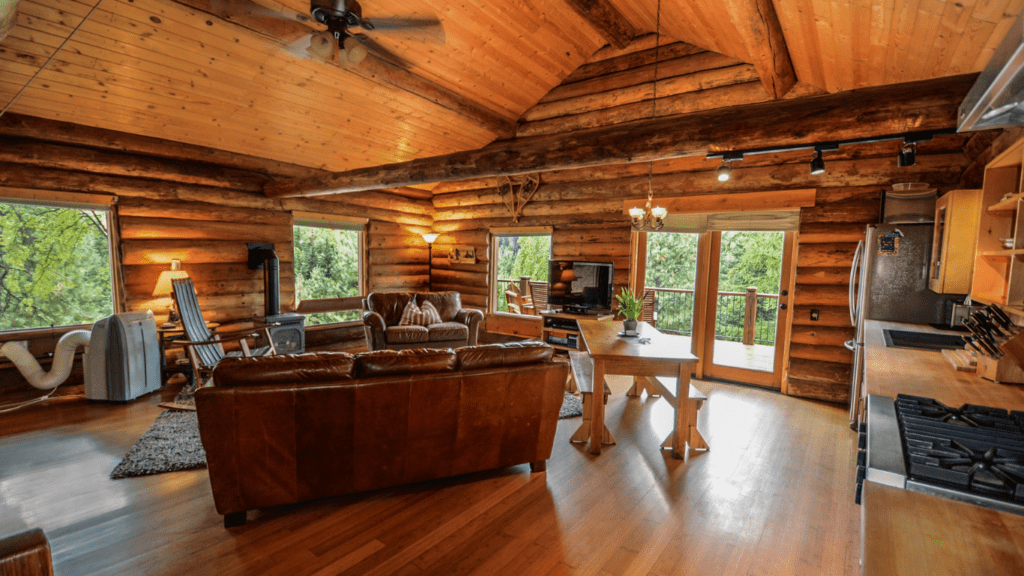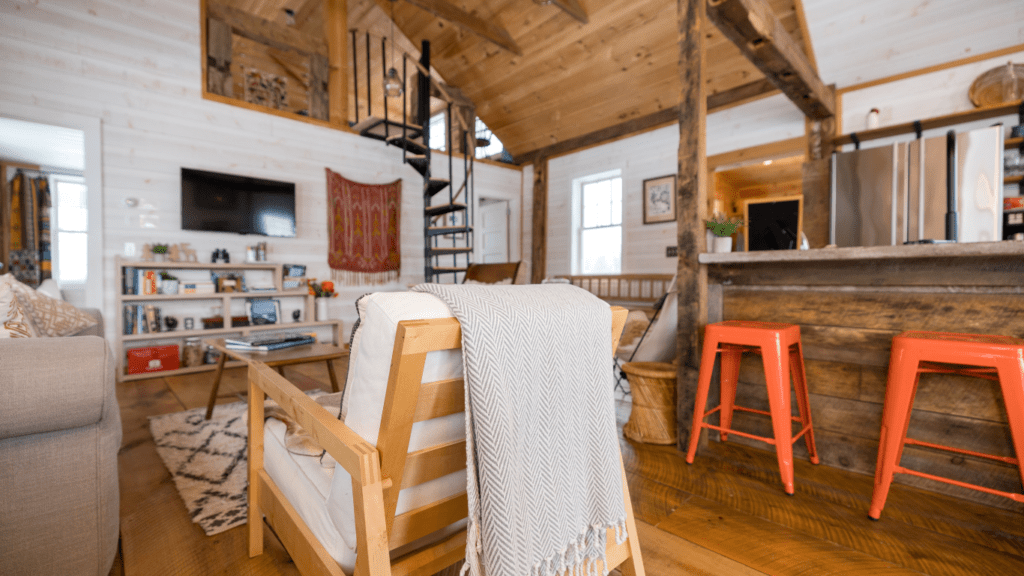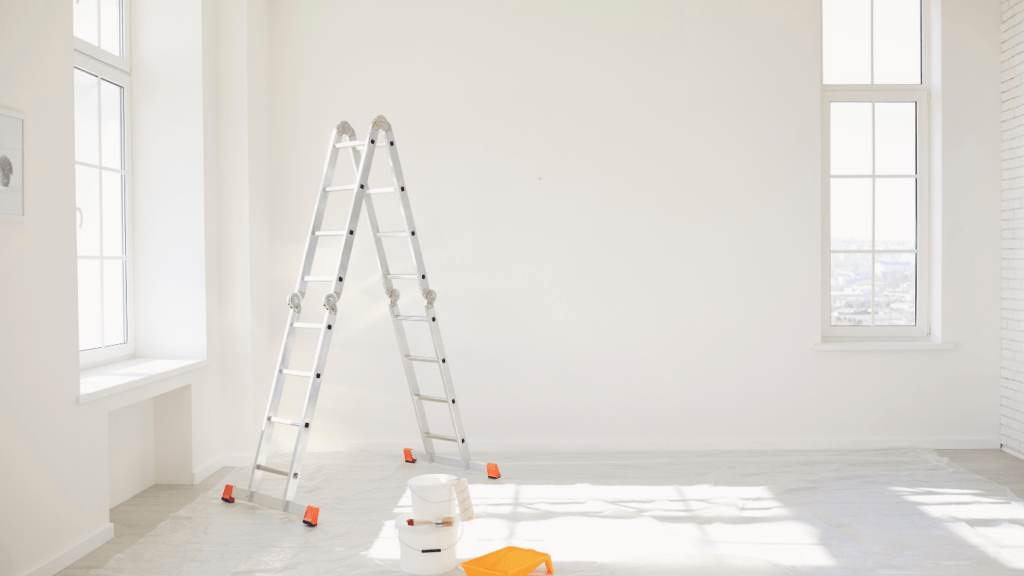Understanding Eco-Friendly Home Renovation
Eco-friendly home renovation focuses on using materials and practices that reduce environmental impact. Sustainable materials include bamboo flooring, recycled glass countertops, and VOC-free paints. Bamboo flooring is rapidly renewable, recycled glass countertops reduce landfill waste, and VOC-free paints improve indoor air quality.
Energy efficiency is another key component. Installing energy-efficient windows, LED lighting, and smart thermostats can significantly reduce energy consumption. Energy-efficient windows provide better insulation, LED lighting uses less power, and smart thermostats optimize heating and cooling.
Water conservation is crucial. Low-flow fixtures, dual-flush toilets, and rainwater harvesting systems help save water. Low-flow fixtures reduce water usage, dual-flush toilets manage flush volume, and rainwater harvesting systems provide an alternative water source.
Waste reduction is essential. Repurposing materials, using reclaimed wood, and donating usable items minimize waste. Repurposing materials keeps them out of landfills, reclaimed wood gives new life to old timber, and donating items supports the community.
By incorporating these practices, my renovation not only becomes more sustainable but also promotes a healthier living environment.
Planning Your Sustainable Makeover
A successful eco-friendly home renovation starts with careful planning. It’s important to set clear objectives and identify the most sustainable materials and methods.
Setting Realistic Goals
Establishing achievable targets is crucial to a successful sustainable renovation. I prioritize goals like:
- reducing energy consumption
- minimizing waste
- improving indoor air quality
Focusing on specific outcomes, such as installing solar panels or upgrading insulation, helps create a structured plan. I always align my budget and timeline with these goals, ensuring that sustainability doesn’t compromise quality or design.
Researching Eco-Friendly Materials
Selecting the right materials makes a significant difference. I look for sustainable options like reclaimed wood, bamboo flooring, and recycled glass countertops. These materials lower environmental impact and enhance aesthetic appeal. Volatile organic compound (VOC)-free paints and eco-friendly adhesives improve indoor air quality. Additionally, I explore local suppliers to reduce transportation emissions. By investing time in thorough research, I ensure each material supports my sustainability goals.
Energy-Efficient Renovation Tips
Energy efficiency forms a critical component of any eco-friendly home renovation. By focusing on measures that reduce energy consumption, homeowners can significantly lower their carbon footprint and utility bills.
Insulation and Windows
High-quality insulation is essential for maintaining indoor temperature and reducing energy usage. I ensure that all exterior walls, attic spaces, and floors have comprehensive insulation. For instance, materials like spray foam and cellulose are excellent choices for their R-value, which measures thermal resistance.
Energy-efficient windows prevent heat loss and improve indoor comfort. I recommend installing double-paned or triple-paned windows with low-E coatings that reflect heat and UV rays. These windows provide superior insulation compared to single-paned versions, thereby reducing heating and cooling costs.
Energy-Saving Appliances
Upgrading to energy-saving appliances contributes significantly to lower energy consumption. I advise choosing Energy Star-rated products, which meet strict energy efficiency guidelines set by the U.S. Environmental Protection Agency. For example, refrigerators, washing machines, and dishwashers with this rating use less energy and water than standard models.
Smart appliances also offer additional control over energy use. I install programmable thermostats that adjust heating and cooling settings based on occupancy patterns. Energy-efficient lighting, such as LEDs, consumes less power and lasts longer than traditional bulbs, making it a sustainable choice.
These steps ensure that energy efficiency is at the forefront of any eco-friendly renovation project, creating a sustainable and cost-effective living environment.
Water Conservation Strategies
Water conservation is crucial for a sustainable home renovation. Efficient water use reduces your environmental impact and saves on utility bills.
Efficient Plumbing Fixtures
Install efficient plumbing fixtures to significantly lower water usage in daily activities. Low-flow faucets, for instance, deliver less water per minute compared to standard ones, without sacrificing pressure. Aerators can be added to existing faucets to reduce flow rates. Dual-flush toilets are another excellent choice, offering different flush volumes for liquid and solid waste. These fixtures conserve water with each use, offering an environmentally friendly and economically sensible solution.
Rainwater Harvesting Systems
- Set up rainwater harvesting systems to collect and reuse rainwater on your property.
- These systems capture rainwater from roofs and store it in tanks for later use in gardens, toilets, or washing machines.
- This reduces dependence on municipal water, conserving a vital resource.
- A basic system includes gutters, downspouts, and a storage tank, but more sophisticated setups may incorporate filtration systems to ensure water quality.
- Rainwater harvesting helps maintain a sustainable water cycle within your household.
Sustainable Building Materials

Incorporating sustainable building materials is essential for an eco-friendly home renovation. These materials reduce environmental impact while promoting a healthier living space.
Recycled and Reclaimed Materials
Using recycled and reclaimed materials offers both environmental and aesthetic benefits. For instance, reclaimed wood can be used for flooring, furniture, and wall paneling. This wood often comes from old barns, factories, or warehouses, giving it unique character while reducing the need for new lumber. You can also find recycled metal and glass for countertops and fixtures, which help decrease waste headed to landfills.
Low-VOC Paints and Finishes
Choosing low-VOC (volatile organic compounds) paints and finishes improves indoor air quality by reducing harmful emissions. Traditional paints release VOCs that can cause respiratory issues and other health problems. Low-VOC products are now available in a wide range of colors and finishes, so you can achieve your desired look without compromising air quality. For example, milk paint and natural oil finishes offer eco-friendly alternatives to conventional products.
Eco-Friendly Flooring Options
Eco-friendly flooring options play a vital role in sustainable home renovations. These options minimize environmental impact without sacrificing style or durability.
Bamboo and Cork
Bamboo is a fast-growing renewable resource. It regenerates quickly after harvesting, making it a sustainable choice for flooring. It’s durable and available in various finishes to suit any decor.
Cork is harvested from the bark of cork oak trees without harming the tree. It’s naturally resistant to mold and mildew. Cork provides excellent insulation and cushioning, which enhances comfort underfoot.
Recycled Tile and Linoleum
Recycled tile utilizes materials like glass, porcelain, and ceramic. This process reduces waste and conserves resources. Recycled tiles come in many designs and colors, adding a unique touch to any room.
Linoleum is made from natural materials such as linseed oil and wood flour. It’s biodegradable and hypoallergenic. Linoleum is long-lasting and available in many patterns and colors, making it a versatile eco-friendly flooring option.
Green Landscaping and Outdoor Spaces
Creating eco-friendly landscapes and outdoor areas adds immense value to property while promoting sustainability. Here are some key considerations.
Native Plant Species
Choosing native plants for landscaping offers several environmental benefits. Native species are adapted to local climates, requiring less water and maintenance. For instance, prairie grasses in the Midwest or cacti in the Southwest thrive with minimal irrigation, reducing water usage. Additionally, native plants support local wildlife by providing natural habitats for birds, bees, and other pollinators. This biodiversity enhances ecosystem health and resilience. Including a mix of native flowers, shrubs, and trees creates a balanced and sustainable garden that align with eco-friendly principles.
Water-Efficient Irrigation
Implementing water-efficient irrigation systems curtails water use in landscaping. Drip irrigation systems, for instance, deliver water directly to plant roots, minimizing evaporation and runoff. Rain sensors and smart controllers further optimize water use by adjusting irrigation schedules based on weather conditions. An example is using a rain barrel to collect and store rainwater for use in drip irrigation, significantly reducing reliance on municipal water sources. These practices ensure that outdoor spaces remain lush and green without wasting precious resources.
By integrating these elements, landscaping becomes a crucial part of an eco-friendly renovation, contributing to overall sustainability and a healthier environment.



 Betsylie Sheetsin – Home Renovation Expert
Betsylie Sheetsin serves as the Home Renovation Expert at Castle Shelf House, specializing in giving practical advice for both small and large-scale home improvements. With years of experience in construction and renovation, Betsylie understands the importance of blending durability with design. Her insights into home renovation projects, along with expert advice on the latest materials and techniques, empower homeowners to tackle even the most ambitious projects confidently.
Betsylie Sheetsin – Home Renovation Expert
Betsylie Sheetsin serves as the Home Renovation Expert at Castle Shelf House, specializing in giving practical advice for both small and large-scale home improvements. With years of experience in construction and renovation, Betsylie understands the importance of blending durability with design. Her insights into home renovation projects, along with expert advice on the latest materials and techniques, empower homeowners to tackle even the most ambitious projects confidently.
